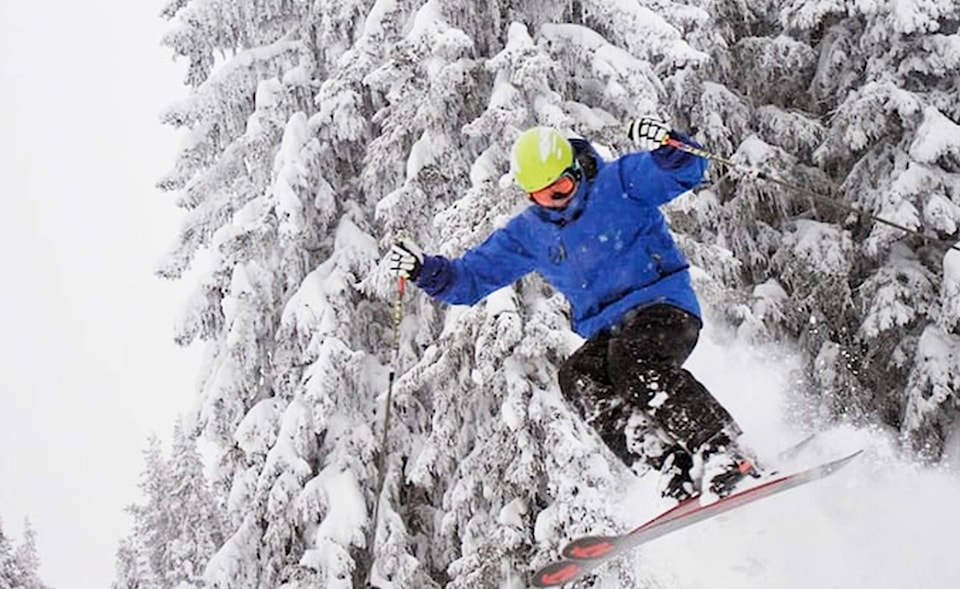As area ski hills settle into the season with all the powder arriving in the past few weeks, the Provincial Health Services Authority/Trauma Services BC has released a few tips for preventing injuring on the slopes.
READ: Opening day at Kimberley Alpine Resort
Trauma Services BC says that despite an encouraging 12 per cent drop in injuries in the 2018/19 winter season, statistics gathered over five years show the rate of hospitalizations for ski and snowboard injuries in B.C. is increasing.
“B.C. is home to some of the best ski resorts in the world and skiing and snowboarding is a great way to stay active during the winter season, but it comes with an element of risk,” said Dr. David Evans, medical director for TSBC, and trauma surgeon at Vancouver General Hospital. “The good news is that most injuries are preventable by simply wearing a helmet, avoiding excessive speed or reckless behaviour and learning how to lower your risk of injury. This helps reduce the chances of injuries, lengthy hospital stays, permanent disability and even death.”
In the 2014/15 winter season, 418 people were hospitalized in B.C. with injuries caused by skiing or snowboarding. Over the next three winters the number of injuries steadily increased, peaking in 2017/18 with 573 people requiring hospitalization. In 2018/19, according to B.C’s provincial trauma registry, that number dropped to 503, a reduction TSBC hopes will continue. According to the BC Coroners, each year in B.C. there are about 10 deaths from skiing and snowboarding.
Males are hospitalized twice as often as females with ski and snowboard-related injuries. For females, the highest number of hospitalizations occur between the ages of 55 to 59, while for males the age range is 20 to 24.
“Continuing to ski or snowboard when you become physically tired increases your risk of falling and injuring yourself,” said Micheline Wiebe, provincial director of TSBC. “It is important to also know your limitations and know when to call it a day, ensuring proper rest.”
Additional tips for reducing risk on the slopes:
- Stay in bounds, observe signs and warnings and keep off closed trails
- Stay in control and ski or snowboard within your abilities. Go at a safe speed.
- Remember that people ahead of you have the right-of-way
- Whenever starting downhill or merging, look uphill and yield
- Watch out for ice, obstacles, other people and trees
- Learn about tree wells and how to reduce your risk
A tree well is a deep hole or depression that forms beneath the lower branches of an evergreen tree because the tree’s branches prevent snow from collecting and packing around that area. The resulting hole or cavity can be metres deep. Skiers or boarders falling towards a tree well often lean into it and find themselves upside down, unable to remove their equipment and descending deeper into the well as they struggle. This can lead to death from suffocation/asphyxia. Tree wells can occur within and outside of ski area boundaries. Reduce your risk of falling into a tree well by staying on groomed runs and skiing or snowboarding with a partner and, most importantly, keeping in sight of them. If you see someone head-first in a tree well, treat it as an emergency and act fast to get them out.
Before you hit the slopes:
- When getting your skis or snowboard tuned, ask the shop technician to take it easy when sharpening the edges. Extremely sharp edges can cut through clothes and lacerate skin.
- Add the ski hill emergency number to your cell phone contacts list. If you need to use it, the emergency operator will dispatch ski patrol right away and get you a faster response than if you send someone for help or wait for a passerby.
- Pack a whistle. This way if you end up hurt or in a tree well you can make noise to get attention.
The BC Trauma Registry is responsible for the collection and management of clinical data on trauma patients to help ensure patients are getting the best possible care, no matter where they live in the province.
carolyn.grant@kimberleybulletin.com
Like us on Facebook and follow us on Twitter
